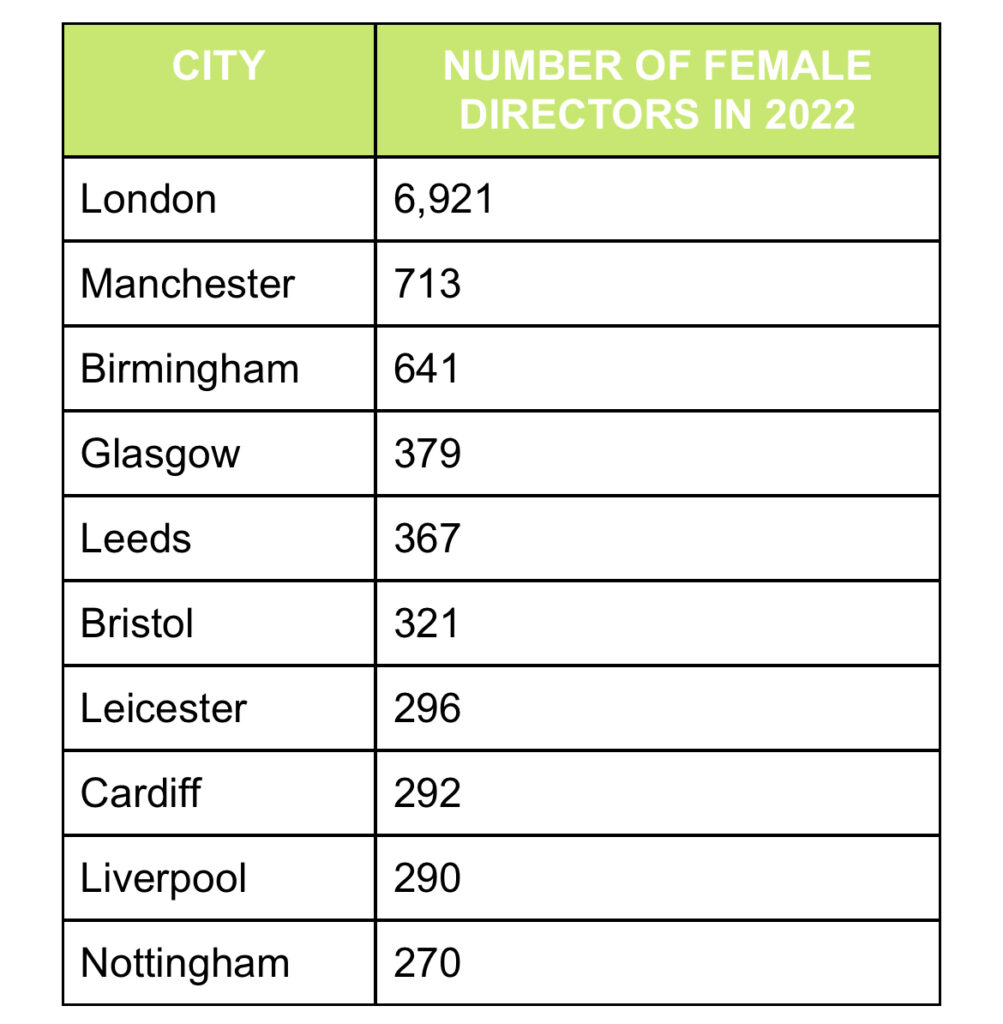New Data Reveals What Cities You Should Work In As A Woman Ahead of Gender Pay Gap Day!

The data team at Instant Offices was able to use the Companies House Dashboard to crunch the numbers and have released their 2022 women in business report.
Women are better educated and more active in the workforce now than ever before. Over 72% of women are employed in the UK currently compared to 65% a decade ago. More are in director and CEO roles.
Despite this, the gender pay gap remains a persistent reminder of the inequality between men and women, with women still largely underrepresented in leadership roles. In fact, the average woman works for free for nearly two months of the year compared to the average man.
On average, women in the UK earn £5,576 less than men annually. This disparity can also be seen in the highest echelons of business.
Of the 117,486 companies launched with directors this year, just 32,183 of those directors are women, compared to 89,540 who are men.
While this paints an unsurprising picture of the overall landscape, the good news is that in some cities, the representation of women at the director level in business is growing. So where exactly is the best and worst places to be for a woman in business and what should they be doing to reach the top? Let’s see…
An analysis of companies launched with directors in 2022 shows London, Manchester and Birmingham are the cities with the highest level of female representation.
London leads the charge, with the highest percentage of female leaders in the country at 22%.
Previously voted the third-best city globally for women-led businesses, the English capital has been praised for its ability to attract, support and foster growth for female leaders.
Some UK cities have far more work to support putting women in director roles, with Portsmouth, Oxford and Plymouth showing the lowest overall representation of women at director level countrywide. These UK cities have the lowest number of female directors in 2022!
When it comes to an equal distribution of men and women in director roles, the gap is significant across the UK at both a city and sector level.
In Birmingham, Liverpool and Cardiff, men appear at director level three times more often than women. In London, 74% of directors are men, while only 26% are women further emphasising the gender pay gap by having less opportunities for women to reach the top.
Drilling down to industry level, some sectors have a slightly better gender balance while others lean into men’s favour. Some of the sectors with an almost equal balance of men and women in upper management roles include cooking, cleaning and educational services. Specialist services like construction, electrics, engineering and automotive are still dominated by men at director level.
Why we need more women in leadership roles
Gender diversity can ultimately benefit the bottom line, culture and overall performance.
54% of small businesses, 64% of medium ones and 59% of large companies report improved business outcomes when implementing initiatives to improve gender diversity. Sectors which reported the most considerable improvements were in construction, tech and education.Research has also shown women score higher than men in most leadership skills.
Supporting women in more influential roles in business, particularly women of colour, is vital. And while startup and entrepreneurship support and infrastructure still have some work to do countrywide, companies can start today by supporting women within organisations to advance, thrive and develop their leadership skills.




